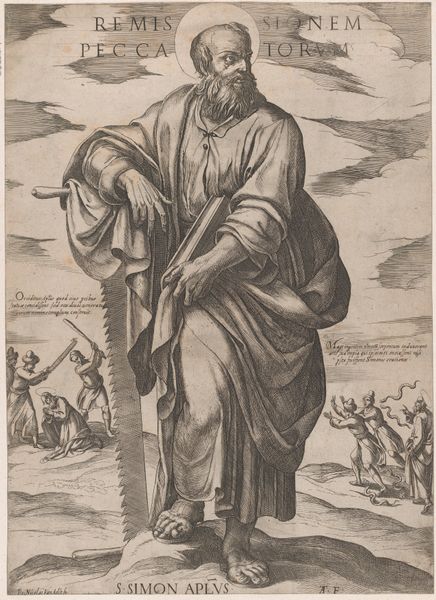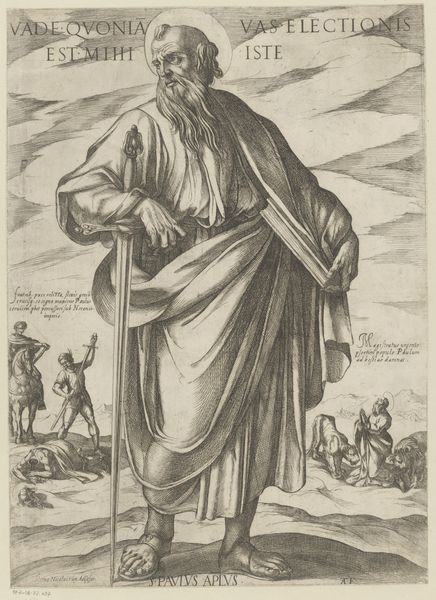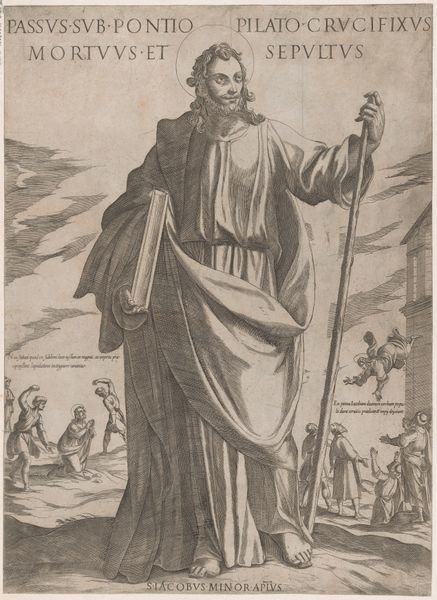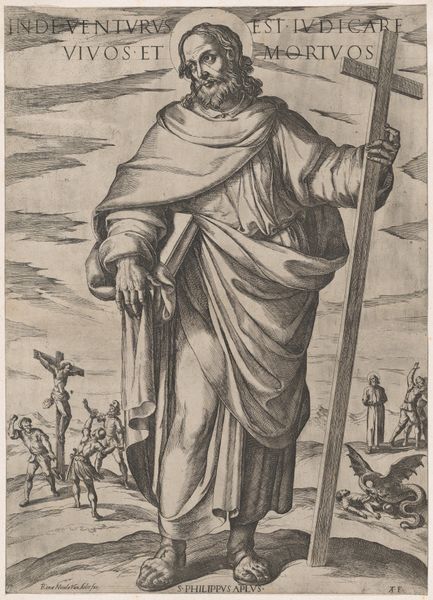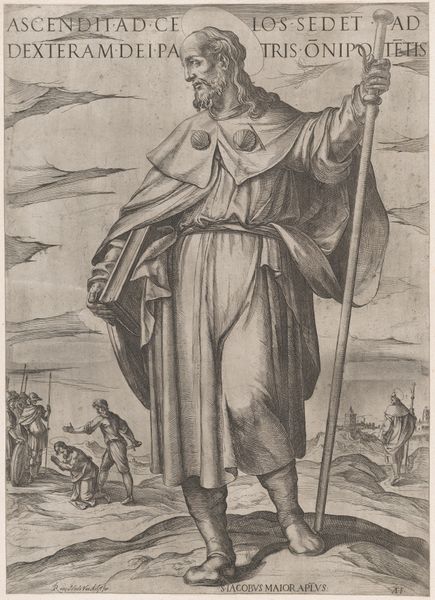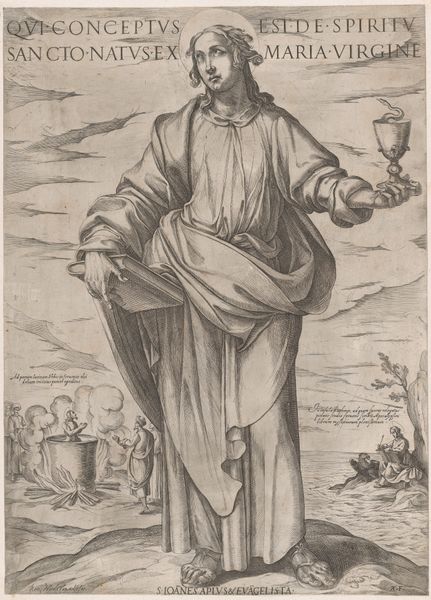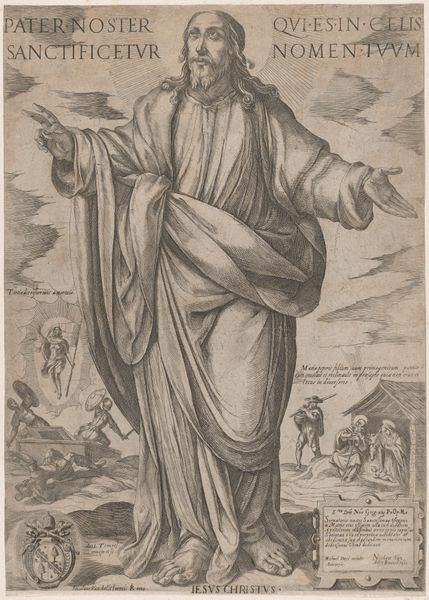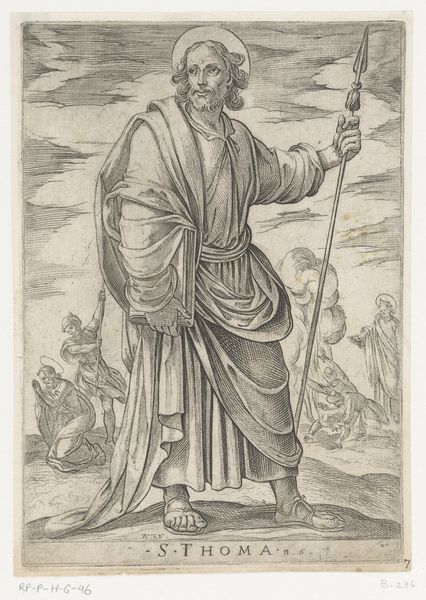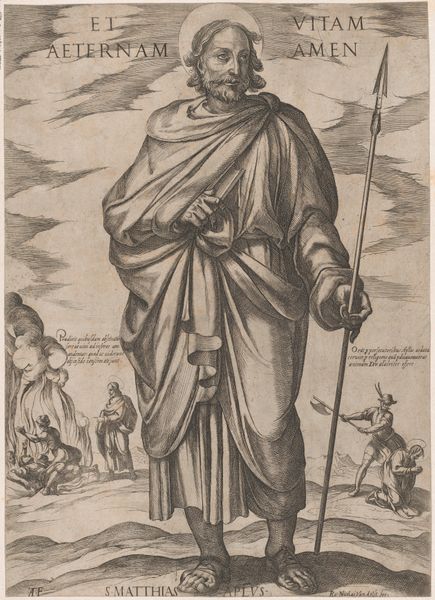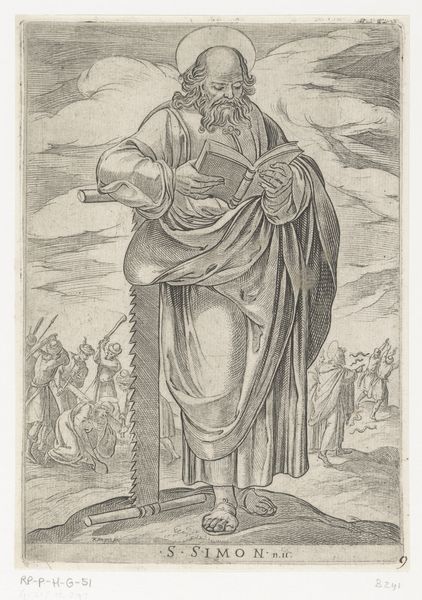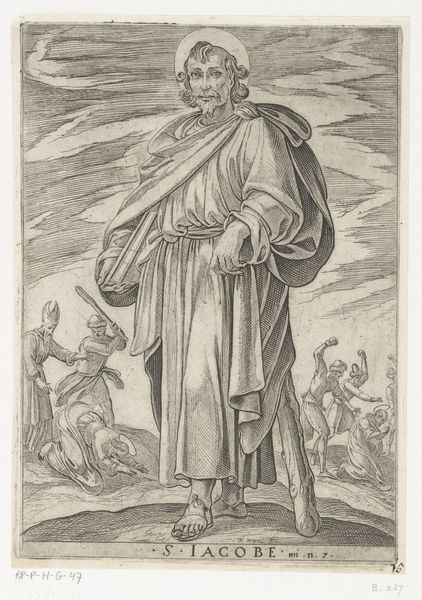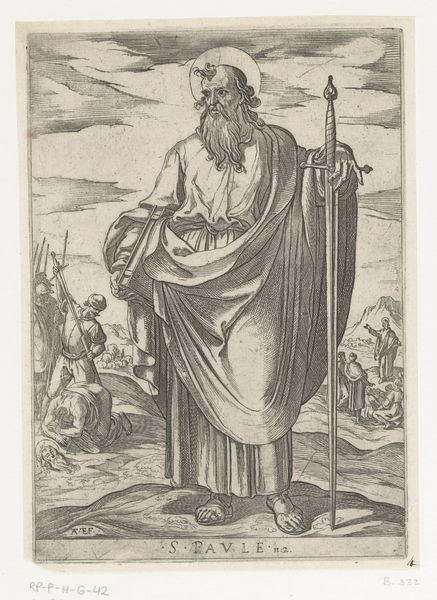
St. Andrew, from 'Christ, Mary and the Apostles' 1585 - 1615
0:00
0:00
drawing, print, engraving
#
portrait
#
drawing
#
baroque
# print
#
old engraving style
#
figuration
#
men
#
line
#
portrait drawing
#
history-painting
#
engraving
Dimensions: Sheet: 20 3/4 × 14 15/16 in. (52.7 × 38 cm)
Copyright: Public Domain
Curator: Looking at this image, the engraving gives St. Andrew a powerful, almost stern presence. The density of the line work is striking. Editor: Indeed. What we're viewing is "St. Andrew, from 'Christ, Mary and the Apostles'," an engraving dating from 1585 to 1615. It is attributed to Antonio Tempesta. I find the weight he carries - a cross in one hand, a fish suspended from another - potent, considering Andrew's martyrdom. Curator: It is indeed suggestive of a historical context where religious conviction faced persecution. The fish, an early symbol of Christianity, hangs limply as if anticipating suffering and loss. We can read this almost as a premonition of violent acts against religious expression that is ever relevant. Editor: Absolutely. I think understanding the patronage of such works is equally crucial. These images often played a role in Counter-Reformation efforts. Saint Andrew, holding the X-shaped cross of his martyrdom, becomes a symbol of unwavering faith in the face of heresy. Curator: How might his story of resilience intersect with contemporary dialogues about resistance and societal justice? Editor: Considering his lower social status as a fisherman and connection to the sea, his defiance reads as more provocative in this moment. We need to analyze art within the context of how class informs expressions of religiosity. Also of note: other interpretations depict Saint Andrew at sea fishing or standing as he’s preaching along the coastline which is so relevant considering the rise in environmental devastation today. Curator: Those are important angles. What I find fascinating are the two vignettes on the periphery: A crucifixion in the background, and figures traveling in a boat on a body of water. They appear connected, both hinting at sacrifice and bearing witness. They offer contrasting images that are active and tragic while also underscoring an internal drama that seems deeply rooted within St. Andrew himself. Editor: It's a potent combination. The figures on the margins underscore the societal impact of Andrew's choices and that greater, political role of the era’s visual culture. In an age marked by religious strife, artistic representations served as vital instruments for galvanizing belief, shaping identities, and enacting control. Curator: By exploring this history, and the socio-cultural context, the engraving does more than relay a saint’s image, it invites scrutiny of historical power dynamics and contemporary challenges for those still advocating change. Editor: Agreed. Reflecting on Antonio Tempesta's engraving encourages us to explore both art's capacity to shape perception and the urgent role of the museum as space of public discourse, as well as to reflect on the many levels and perspectives to be appreciated through images that continue to transcend time.
Comments
No comments
Be the first to comment and join the conversation on the ultimate creative platform.
